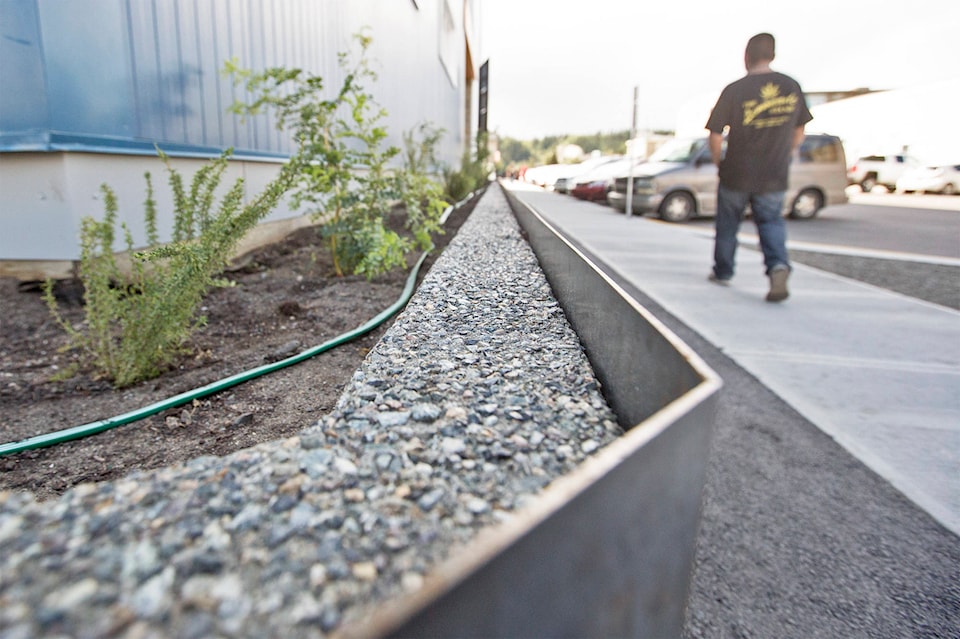Metal strips placed along wooden parking barricades and planters surrounding a downtown Whitehorse building in an apparent attempt to keep people from sitting on them are in violation of bylaw and scheduled to be removed, according to the city.
In an email Aug. 8, city spokesperson Myles Dolphin wrote that the installation of the metal strips at 303 Alexander St., at the corner of Third Avenue and Alexander Street, “was not completed or endorsed by the City of Whitehorse and only just recently came to the attention of Administration.”
“Besides being harsh and uninviting these metal strips have sharp corners and edges which also presents a safety concern for those walking in close proximity,” Dolphin wrote. “The City will be working with the building owner to have them removed pursuant to the provisions within the City of Whitehorse Maintenance Bylaw.”
Section 48 of the bylaw states that no one is allowed to “cause, permit, or allow property owned or occupied by them to be in bad repair or to constitute a danger.”
Dolphin said that the building manager told the city the strips will be removed by early next week.
According to city records, the building is owned by a numbered company, 535756 Yukon Inc. Its president, Walter Trotter, did not respond to either an email or a message left at his workplace.
The building contains, among other things, offices for the Yukon government’s Department of Economic Development, a law office, a sleep clinic and a psychiatrist’s office.
The strips have been in place since at least late May and are an example of what’s been dubbed “defensive architecture” or “hostile architecture,” where property owners or managers use purposely-uninviting design elements to keep people from loitering or otherwise staying in the area.
Other examples of “hostile architecture” include park benches with handles in the middle to prevent people from sleeping on them, studs and spikes installed on the ground under outdoor but covered areas and strategically-placed greenery.
The Yukon Anti-Poverty Coalition’s executive director, Kristina Craig, said she thought the appearance of hostile architecture in Whitehorse was “unfortunate.”
“We all live here. Everybody needs a place to sit from time to time and if we are recognizing that people sometimes don’t have other places to gather or to be, they are often outside,” she said, adding that hostile architecture can have “more of an impact on some parts of the population than others.”
Although she said she can’t remember another time anyone in Whitehorse has installed metal sheeting, Craig said there are other examples of businesses trying to keep people “moving along.” The Tim Hortons on Second Avenue plays loud classical music, she said, and, “back in the day,” the government considered moving its liquor store to a less central location so that tourists wouldn’t see people loitering outside.
“We need to recognize that we do all live here in the city and we are all neighbours and we actually don’t always know everybody else’s story or what … their situation might be,” she said.
“So I think every business owner has absolutely a right to ensure that their business is clean and safe and people are happy to go there and I think there are lots of ways we can support business owners in doing that … But if the only way we think we can respond is making it hard for people to gather and sit down, I think we have a long way to go if that’s as deep as we’re willing to go.”
Contact Jackie Hong at jackie.hong@yukon-news.com
